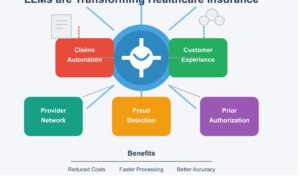Agriculture is the backbone of many economies worldwide, serving as a primary source of income, food, and employment. However, farming is fraught with uncertainties such as fluctuating market prices, adverse weather conditions, pests, and diseases. These challenges make financial stability essential for farmers. Agricultural credit and insurance provide critical financial solutions to mitigate risks and enhance productivity.
Understanding Agricultural Credit
Agricultural credit refers to the funds provided to farmers and agribusinesses to support their farming activities. These loans aim to finance various agricultural operations, including purchasing seeds, fertilizers, equipment, and livestock. Agricultural credit can be short-term, medium-term, or long-term, depending on the specific needs of the farmer.
Types of Agricultural Credit
Short-Term Credit
Short-term loans are used to meet immediate financial needs. These include purchasing seeds, fertilizers, and pesticides or covering labor costs during planting seasons. Repayment usually occurs after harvest when farmers sell their produce.
Medium-Term Credit
Medium-term loans help farmers invest in machinery, irrigation systems, or storage facilities. These loans have a repayment period ranging from one to five years, allowing farmers to enhance their operational efficiency.
Long-Term Credit
Long-term agricultural credit supports significant investments like land acquisition, building infrastructure, or purchasing advanced machinery. Repayment periods extend beyond five years, making them ideal for substantial developmental projects.
Benefits of Agricultural Credit
Enhanced Productivity
Access to credit enables farmers to invest in high-quality inputs, improving crop yields and livestock production.
Risk Mitigation
Credit helps farmers adopt modern techniques and technologies, reducing dependency on outdated practices prone to failure.
Economic Growth
By empowering farmers, agricultural credit stimulates rural economies, creating jobs and increasing income levels.
Better Financial Planning
Credit allows farmers to plan their activities more effectively, ensuring a steady flow of resources throughout the farming cycle.
Agricultural Insurance: A Safety Net for Farmers
Agricultural insurance protects farmers against financial losses arising from unforeseen events. It acts as a buffer against risks such as crop failure, livestock loss, or market fluctuations. Insurance policies are tailored to meet the diverse needs of farmers, ensuring they can recover and sustain their livelihoods.
Types of Agricultural Insurance
Crop Insurance
Crop insurance covers losses due to adverse weather conditions, pests, or diseases. It ensures farmers receive compensation for reduced yields, helping them stay financially stable.
Livestock Insurance
Livestock insurance protects against the loss of animals due to diseases, accidents, or natural disasters. This policy helps farmers maintain their income sources even in adverse situations.
Weather-Based Insurance
This innovative insurance type compensates farmers for losses caused by specific weather conditions, such as drought or excessive rainfall. It uses weather data to determine payouts, ensuring timely assistance.
Revenue Insurance
Revenue insurance combines protection against yield loss and price volatility, ensuring farmers achieve stable incomes regardless of market fluctuations.
Advantages of Agricultural Insurance
Risk Reduction
Insurance minimizes the financial impact of unpredictable events, allowing farmers to focus on productivity.
Encouragement of Investment
Knowing they have a safety net, farmers are more likely to invest in advanced technologies and practices.
Stability for Rural Communities
By securing farmers’ livelihoods, agricultural insurance fosters economic stability in rural areas.
Access to Credit
Insured farmers are often considered low-risk borrowers, making it easier to access loans from financial institutions.
The Synergy Between Agricultural Credit and Insurance
Agricultural credit and insurance complement each other to create a comprehensive financial safety net for farmers. Credit provides the necessary funds for investments, while insurance protects these investments from unforeseen risks. Together, they enhance agricultural resilience and promote sustainable farming practices.
For example, a farmer using credit to purchase high-quality seeds can safeguard their investment with crop insurance. In the event of a natural disaster, the insurance payout ensures the farmer can repay the loan without financial strain. This synergy not only supports individual farmers but also strengthens the agricultural sector as a whole.
Challenges in Implementing Agricultural Credit and Insurance
Despite their benefits, several challenges hinder the effective implementation of these financial solutions:
Lack of Awareness
Many farmers, especially in developing regions, are unaware of the availability and benefits of credit and insurance schemes.
High Premiums and Interest Rates
The cost of insurance premiums and loan interest rates can be prohibitive for small-scale farmers.
Complex Procedures
Lengthy documentation and complicated processes deter farmers from availing these services.
Limited Accessibility
Remote rural areas often lack access to financial institutions offering credit and insurance.
Moral Hazard and Adverse Selection
Insurance schemes face challenges like moral hazard, where farmers may take excessive risks, and adverse selection, where only high-risk individuals opt for coverage.
Solutions to Enhance Adoption
Awareness Campaigns
Educating farmers about the benefits and availability of financial solutions can significantly boost adoption rates.
Subsidized Schemes
Governments and organizations can offer subsidies on premiums and interest rates to make these services affordable.
Simplified Processes
Streamlining application and claim processes can encourage more farmers to participate.
Digital Platforms
Leveraging technology can improve accessibility and efficiency, enabling farmers to access services from their mobile devices.
Public-Private Partnerships (PPPs)
Collaborations between governments and private entities can expand the reach and effectiveness of credit and insurance schemes.
The Role of Technology
Technology plays a pivotal role in transforming agricultural credit and insurance. Tools like satellite imagery, weather forecasting, and blockchain enable accurate risk assessment, efficient claims processing, and transparent transactions. Digital platforms and mobile applications also facilitate easy access to financial services, bridging the gap between farmers and service providers.
For instance, weather-based insurance schemes use real-time data to determine payouts, ensuring timely assistance. Similarly, digital credit platforms assess creditworthiness using data analytics, enabling quick loan approvals without collateral.
Conclusion
Agricultural credit and insurance are indispensable tools for empowering farmers and ensuring the sustainability of agriculture. By providing financial stability and mitigating risks, these solutions enable farmers to adopt modern practices, enhance productivity, and contribute to economic growth. However, addressing challenges such as awareness, affordability, and accessibility is crucial to maximizing their impact.
Governments, financial institutions, and technology providers must work together to create inclusive and efficient systems. With the right support, agricultural credit and insurance can transform farming into a resilient and prosperous sector, ensuring food security and economic stability for generations to come.



































